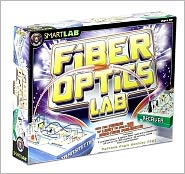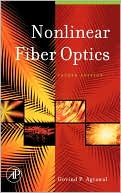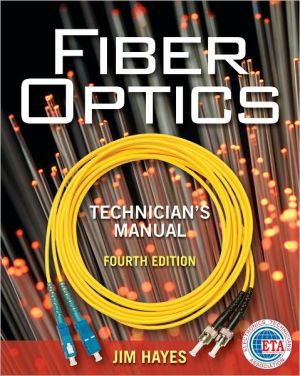City of Light: The Story of Fiber Optics (Sloan Technology)
City of Light tells the story of fiber optics, tracing its transformation from 19th-century parlor trick into the foundation of our global communications network. Written for a broad audience by a journalist who has covered the field for twenty years, the book is a lively account of both thepeople and the ideas behind this revolutionary technology. The basic concept underlying fiber optics was first explored in the 1840s when researchers used jets of water to guide light in laboratory...
Search in google:
This paperback edition of a work first published by Oxford in 1999 has a new final chapter, on the second phase in fiber- optics, when stock in bandwith technology became overvalued and went bust in the late 1990s. The book is valuable for its clear descriptions of the technology while also tracing the careers and development of the people and companies that made this a dominant industry. Hecht, an engineer, writes on science and technology in the UK. Annotation © 2004 Book News, Inc., Portland, OR Publishers Weekly The first underwater telegraph cable was laid between England and the Continent in 1850, with the cable from America to Europe following in 1858. But for the next century, improvements in transcontinental communication came slowly. By the 1940s, Americans could talk to Europeans via a static-plagued radiophone. By the early 1980s, satellite transmissions had improved conversation clarity significantly, but callers were still annoyed by delay and feedback. Those who have made a transcontinental call recently, however, know that the wonders of fiber optics have made it possible to hear a pin drop on the Champs-Elysees. In this deft history, Hecht, a writer for the British weekly New Scientist, shows how the illuminated fountains that thrilled crowds at the great 19th-century exhibitions convinced scientists that light can be guided along narrow tubes. In our century, scientists used these tubes of light first to look inside the human body and then, as the physics of wave transmission were better understood, to transmit audio and optical information. Hecht explains which technological advances have made fiber optics the backbone of our telephone system in the last 10-15 years and how everyday applications should increase exponentially once fibers are connected directly to our homes. Already optical fibers are used in many surprising ways: guiding laser light in life-saving surgery; embedded in concrete to monitor stress in bridges; wound into gyroscopes to improve airline safety. Hecht's latter chapters are bogged down slightly with details that will mainly interest readers working in related areas, but general science buffs should enjoy his account of the development of the technology that will change our lives in many unexpected ways in the next quarter century. (Feb.)
Preface to the Sloan Technology SeriesAuthor's Preface1Introduction: Building a City of Light32Guiding Light and Luminous Fountains (1841-1890)123Fibers of Glass284The Quest for Remote Viewing: Television and the Legacy of Sword Swallowers (1895-1940)345A Critical Insight: The Birth of the Clad Optical Fiber (1950-1955)46699 Percent Perspiration: The Birth of an Industry (1954-1960)607A Vision of the Future: Communicating with Light (1880-1960)768The Laser Stimulates the Emission of New Ideas (1960-1969)929"The Only Thing Left Is Optical Fibers" (1960-1969)10310Trying to Sell a Dream (1965-1970)11711Breakthrough: The Clearest Glass in the World (1966-1972)13112Recipes for Grains of Salt: The Semiconductor Laser (1962-1977)14713A Demonstration for the Queen (1970-1975)16014Three Generations in Five Years (1975-1983)17615Submarine Cables: Covering the Ocean Floor with Glass (1970-1995)20116The Last Mile: An Elusive Vision21617Reflections on the City of Light227App. ADramatis Personae: Cast of Characters239App. BA Fiber-Optic Chronology247Notes259Index305








